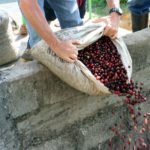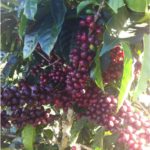Description
Costa Rica
Costa Rica is one of the top producers of coffee. Coffee is Costa Rica’s number three export. Coffee exporting is incredibly important to the country’s economy. Arabica coffee was first introduced to the country directly from Ethiopia in the late 1770’s. The Costa Rican government encouraged farming by offering plots of land to farmers who wanted to grow and harvest the plants. By 1829, coffee production was a larger source of revenue than tobacco, cacao, and sugar cane. Today, many Nicaraguan immigrants are often employed as seasonal workers on plantations to harvest coffee during peak seasons.
Honey Process
Honey processed coffee is unique. When the skin and pulp are removed from the cherry, the mucilage, a sugary, sticky outer layer, is left on during the drying stage. This mucilage is sometimes called “honey”, which is why this process is called Honey Process. Honey processed coffees are significantly less acidic than washed or natural/sun dried coffees. They also have much more character and sweetness than traditional fully washed coffees.
Farmers have begun to assign colors to each honey process. Colors indicate the amount of sunlight each cherry is exposed to. Yellow/white honey process being the most and black honey process being the least amount of sunlight. Yellow/white honey coffees are usually dried in the sun for around a week. Red honey is dried for two to three weeks, usually in the shade. Black honey is exposed to as little light as possible and must dry for at least two weeks. The longer the dry time, the more fruit-forward the end result tastes.
Cumbres Del Poas Red Honey
Dona Francisca and her husband Oscar Chacon of the Cumbres del Poas micro mill are 3rd generation coffee producers. The Cumbres del Poas micro mill is located in the Sabanillia de Alajuela in the Central Valley region of Costa Rica. Both Francisca and Oscar believe in preservation of the environtment. They were one of the first pioneers of high-quality honey and natural process coffees in Central America back in 2009 when they started experimenting with special processes. Water use at the mill is minimal, since their coffees do not undergo the washed process. During the harvest of their coffees they will measure the brix content in the coffee cherries to determine the best time to pick their coffees to obtain the utmost sweet and fruit forward profile.








Reviews
There are no reviews yet.